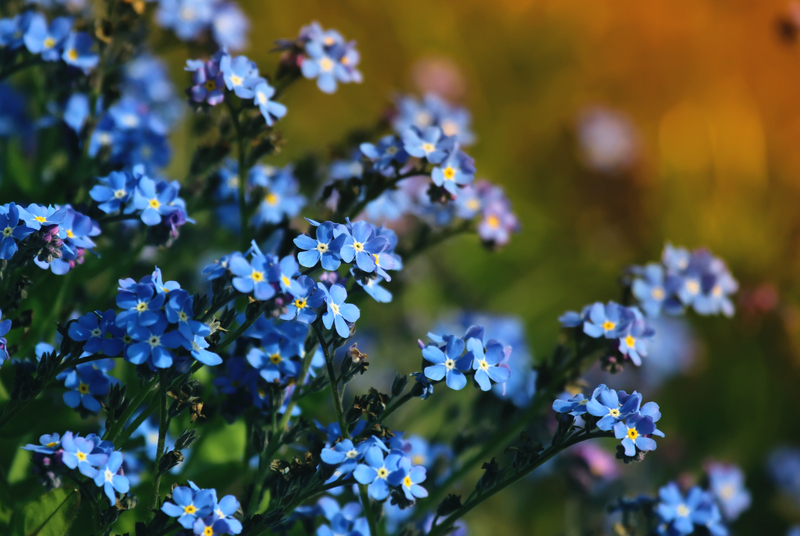From Toys to Tours: Making a Child-Friendly Garden
Posted on 17/08/2025
From Toys to Tours: Making a Child-Friendly Garden
The garden is more than just a patch of earth outside your house -- it can be a magical sanctuary where childhood memories are made. Whether you have a sprawling yard or an urban balcony, creating a child-friendly garden allows your little ones to explore, learn, play, and fall in love with nature. This comprehensive guide will walk you through the transformation, from adding playful toys to planning enchanting tours and activities, ensuring your outdoor space blooms with fun, safety, and discovery.
Why Build a Child-Friendly Garden?
Before we dive into the nuts and bolts, it's essential to understand the importance of designing a garden with children in mind:
- Encourages Outdoor Activity - Gardens motivate kids to spend more time outdoors, balancing out screen time.
- Supports Learning and Development - Gardening teaches patience, responsibility, and scientific observation.
- Boosts Well-being - Being close to nature lowers stress and enhances mood, even for the youngest members of the family.
- Fosters Family Time - Working together in the garden creates lasting memories and strengthens bonds.

Planning Your Child-Friendly Garden: The Essentials
1. Dream Together
Start by involving your children in the planning process. Ask them what they would love to see and do in their outdoor space. Would they prefer a sandpit, a butterfly garden, or a miniature vegetable plot? Sharing these dreams will make the space more special and ensure everyone feels ownership.
2. Prioritize Safety First
- Secure gates and fences to establish clear boundaries.
- Remove poisonous or spiky plants.
- Cover ponds or water features unless your children are old enough to be supervised.
- Choose non-slip surfaces for paths and play areas.
- Store tools and chemicals out of reach, preferably locked away.
3. Design for Curiosity and Engagement
Think beyond a grassy area. A child-centric garden is dynamic, offering opportunities to explore through textures, colors, scents, and sounds. Create winding paths, secret hideaways, and interactive zones that spark curiosity.
Must-Have Elements for a Kids' Garden
A. Playful Features: From Classic Toys to Adventure Zones
- Swings and Slides: Timeless favorites that never fail to delight. Opt for sturdy material and regular safety checks.
- Sandpits: Encourage creative building and sensory play. Use a sturdy cover to keep pets out.
- Climbing Frames or Treehouses: Introduce adventure and physical activity. Make sure construction is robust and free from splinters or sharp edges.
- Mud Kitchens: Perfect for budding chefs and scientists. Set up with old pots, wooden spoons, and plenty of safe mud!
- Natural Play Spaces: Use logs, stepping stones, and willow tunnels for organic climbing and hiding.
B. Educational Areas: Growing and Learning Together
- Vegetable Patches: Let kids plant easy-grow veggies like radishes or carrots, teaching patience and responsibility.
- Miniature Greenhouses: Clear, child-sized greenhouses can introduce the basics of plant care all year round.
- Butterfly and Bee Gardens: Plant nectar-rich flowers to encourage wildlife and teach about pollination.
- Compost Bins: Introduce simple, supervised composting to demonstrate sustainability and natural cycles.
C. Sensory Zones: Engaging Every Sense
- Herb Gardens: Fragrant plants like mint, lavender, and rosemary are perfect for touch and smell exploration.
- Music Walls: Hang pots, pans, and wind chimes for creative noise-making and sound discovery.
- Textured Paths: Use pebbles, bark, grass, and sand for tactile foot adventures.
Plant Selection: Child-Safe and Inspiring Choices
A family-friendly garden should be as safe as it is enchanting. Opt for plants that withstand rough play and spark natural wonder:
- Sunflowers: Giant, bold, and fast-growing -- the ultimate child pleaser.
- Snapdragons and Nasturtiums: Tough, colorful, and edible blooms.
- Strawberries and Blueberries: Delicious to grow and pick. Consider container gardening for easy access.
- Grasses: Ornamental grasses sway in the breeze and add sensory movement.
- Mini Fruit Trees: Dwarf apple or pear trees offer hands-on harvesting fun.
Tip: Always check the toxicity of plants. Avoid oleander, foxglove, lily-of-the-valley, and similar hazardous species.
Outdoor Play and Learning: From Toys to Nature Tours
Toys That Grow Up with Your Child
When choosing outdoor toys, select those that adapt as children grow. For instance:
- An adjustable basketball hoop for different ages.
- Balance bikes transitioning to standard bikes.
- Stacking blocks for toddlers, which become garden stepping stones as they get older.
Organized Nature Tours and Activities
Transform your backyard into a mini-adventure park throughout the year. Here are ideas for structured and spontaneous activities that blend play with education:
- Bug Hunts: Teach observation and respect for living creatures. Provide magnifying glasses and identification charts.
- Treasure Trails: Hide clues throughout the garden for a scavenger hunt, encouraging exploration.
- Seasonal Tours: Walk the garden every season to see what's changed -- buds, insects, bird visitors, and more.
- Family Harvest Days: Involve the whole gang in picking vegetables, fruits, or herbs. Turn it into a fun cooking project afterwards.
Safety and Maintenance: Keeping Your Garden Child-Friendly
A child-safe garden thrives on regular care. Here's how to keep things secure and joy-filled year-round:
Routine Safety Checks
- Inspect equipment, fences, and surfaces for wear-and-tear or hazards.
- Check for stinging insects (wasp nests, bee hives) in play areas.
- Prune or remove overgrown plants that might conceal dangerous objects or paths.
- Store garden chemicals, sharp tools, and other hazardous items in locked sheds.
Safe Wildlife Encounters
- Position feeders and birdbaths near, but not directly inside, high-traffic play zones.
- Teach children to observe creatures from a safe distance -- never pick up unknown animals.
- Regularly clear debris (leaf piles, wood stacks) to minimize unwelcome animal guests.
Making the Garden Accessible All Year Round
Seasons change, but the fun doesn't have to stop. With a little planning, your kid-friendly garden can be a place for adventure in any weather.
- Install an awning or gazebo for sun and rain protection.
- Invest in waterproof play mats and mud-friendly clothing for year-round exploration.
- Consider solar or low-voltage lighting for safe dusk playtime.
Eco-Friendly and Sustainable Practices
Transforming your garden into a child-friendly haven is also an opportunity to teach environmental responsibility. Here's how you can make your garden greener:
- Use rainwater butts for garden watering.
- Opt for peat-free compost and organic pest control.
- Grow native plants that support local wildlife.
- Introduce bug hotels or log piles to attract beneficial insects.
- Encourage upcycling - use old tyres as planters, or convert pallets into garden furniture.
Top Tips for Creating Lasting Memories
- Take Regular Photos: Capture milestones -- the first sunflower, the biggest strawberry, building the mud kitchen, or a wildlife spotting.
- Keep a Family Gardening Journal: Document experiences, pressed flowers, doodles, or even funny stories from the garden.
- Make Projects Collaborative: Assign tasks and let children contribute ideas and creativity, from naming different beds to painting planters.
- Celebrate Achievements: Host garden parties, harvest festivals, or just sit outside together and enjoy the results of your teamwork.

Adapting Your Garden as Children Grow
As your children change, so can your family garden. Here's how to evolve your outdoor space to keep it engaging, educational, and inclusive:
- Update toys and equipment for age-appropriate challenges and interests.
- Expand the vegetable patch or add more complex plants for older kids.
- Introduce science projects, like weather stations or pond ecology kits, for curious preteens.
- Allow young adults to plan their own flower beds or relaxation spaces.
Conclusion: Growing Together in a Child-Friendly Garden
From colorful toys scattered under shady trees to the delighted faces of your children as they discover a hidden strawberry, building a child-friendly garden is about more than making space for play. It's about nurturing curiosity, responsibility, and memories that last a lifetime. By combining engaging toys, hands-on gardening, and safe exploration, your garden transforms into a classroom, a playground, and a family retreat. Start planning your own kid-centric oasis today, and watch as your outdoor space becomes the most beloved room in your home.
Ready to plant the seeds of childhood wonder? Share your child-friendly garden ideas and experiences in the comments below! Let's grow a generation that cherishes nature, one playful garden at a time.

